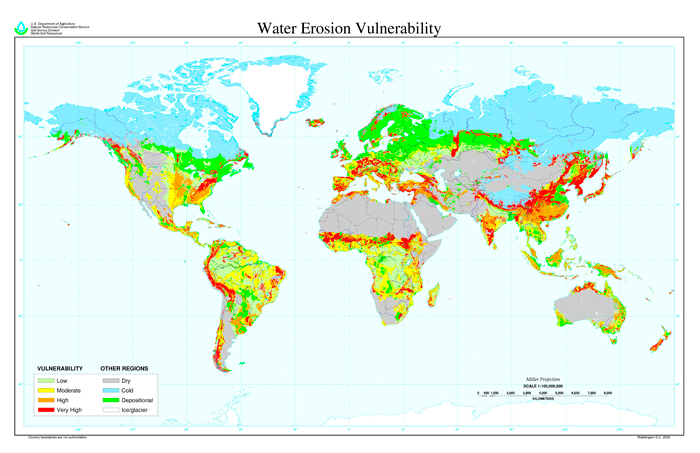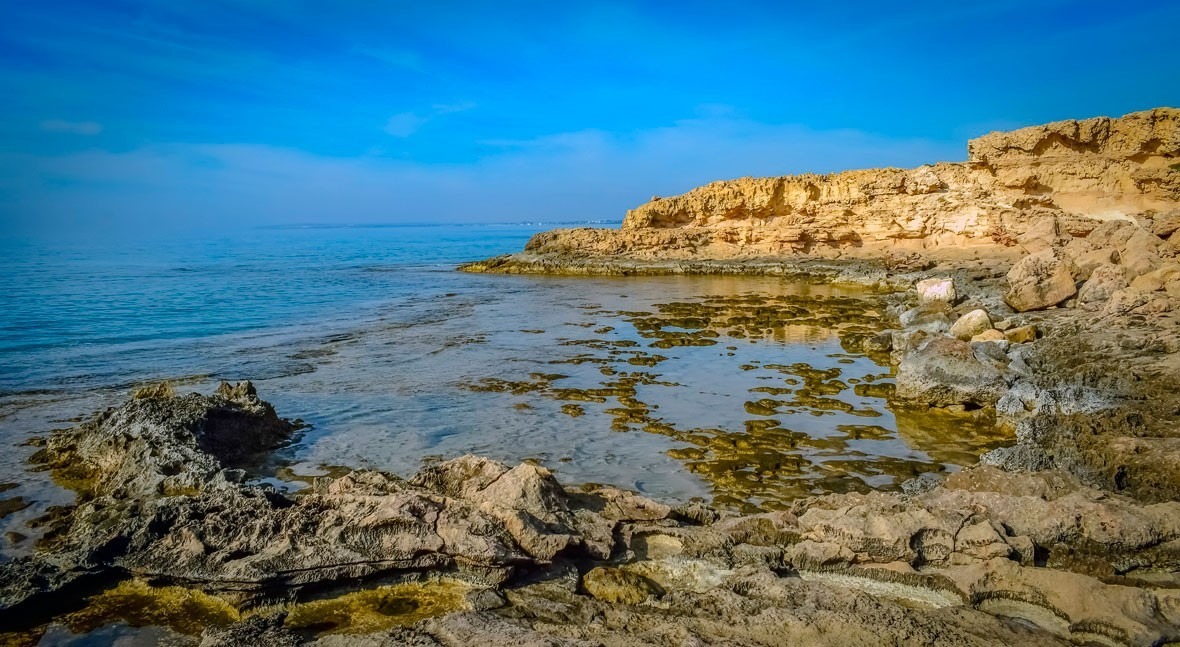World Soil Day is held annually on December 5th since 2014, the year when the UN designated the date at the request of the FAO the previous year. With the theme 'Stop soil erosion, save our future', the 2019 campaign focuses on raising awareness about the importance of sustaining healthy ecosystems and human well-being by addressing the increasing challenges in soil management.
Mainly promoted by the FAO, this day aims to raise the profile of healthy soil and encourage governments, organizations, communities and individuals around the world to engage in proactively improving soil health.
Because soil, like water, is intrinsically connected to human development. Human beings tend to think these two resources are endless, and therefore, they over-exploit them. This has serious consequences not only in the short term, it also risks the sustainability of future generations. According to the FAO, over 33% of the Earth's soils are already degraded and 90% could become degraded by 2050.

Soil erosion (source: FAO)
Why is soil management important?
Soil pollution is a worldwide problem that degrades our soils, poisons the food we produce in the soil, and also the water we drink and the air we breathe. Because they store and filter water, soils improve food security and our resilience to floods and droughts.
- In the 5 seconds it takes you to read this sentence, the equivalent of one soccer pitch of soil is eroded.
- Each year, 20 to 30 Gt (billion tonnes) of soil is estimated to be eroded by water, 5Gt by tillage and 2 Gt by wind on arable land.
- The average rate of soil erosion by wind, water and tillage is estimated at 0.9 mm per year.
- It can take up to 1,000 years to produce just 2-3 cm of soil.
- Over 33% of the Earth's soils are already degraded and 90% could become degraded by 2050.
- Soil erosion can lead up to a 50% loss in crop yields.
- If the current trend of soil erosion remains unchanged, the total annual production potential is projected to be reduced by 10% by 2050.
- Topsoil and subsoil acidity (pH <5.5) affect around 30% and 75% respectively of the total ice-free land area of the world.
- About 815 million people suffer food insecurity and some 2 billion people do not have enough nutritious food. This situation could be mitigated through appropriate soil management.
- The soil retains three times as much carbon as the atmosphere and can help us fight climate change.
The FAO warns that soil erosion affects soil health and productivity, decreasing the amount and quality of the food we consume. In addition, soils have a key role in the supply of clean water and resilience to floods and droughts, not to mention their great potential to filter and buffer pollutants, degrading them and mitigating their negative effects.
What is soil erosion?
Soil erosion is the removal of the top most fertile soil layer from the land's surface by water and wind. It tends to be a slow process, so it may go unnoticed. But it may also occur at an alarming rate, specially due to a third factor that exacerbates the action of the two first ones: human activity (over-exploitation) has increased 10 to 40 times the rate at which erosion is occurring globally.
How many types of soil erosion are there?
Water and wind are the two main agents causing soil erosion, giving rise to different types of soil erosion. However, water is the major cause of erosion through the various ways it may come in contact with soil.
On one hand, there is rainfall and surface runoff, which lead to several kinds of water erosion:
- Splash erosion is generally seen as the first and least severe stage in the soil erosion process. The impact of a falling raindrop creates a small crater in the soil, ejecting soil particles.
- Sheet erosion is the transport of loosened soil particles by overland flow. It happens if the soil is saturated, or if the rainfall rate is greater than the rate at which water can infiltrate into the soil and surface runoff occurs.
- Rill erosion refers to the development of small, ephemeral concentrated flow paths which function as both sediment source and sediment delivery systems for erosion on hillslopes.
- Gully erosion occurs when runoff water accumulates and rapidly flows in narrow channels during or immediately after heavy rains or melting snow, removing soil to a considerable depth.
On the other hand, there are rivers and streams:
- Valley erosion occurs with continued water flow along a linear feature. The erosion is both downward, deepening the valley, and headward, extending the valley into the hillside, creating head cuts and steep banks.
- Bank erosion is the wearing away of the banks of a stream or river.
- Thermal erosion is the result of melting and weakening permafrost due to moving water. It can occur both along rivers and at the coast.
We should note that in all stages of stream erosion, by far the most erosion occurs during times of flood, when more and faster-moving water is available to carry a larger sediment load. Considering that climate change is causing increasingly more flooding, having this World Soil Day makes all the more sense.
Aside from the different types of erosion caused by water, there is wind erosion, especially in arid and semi-arid regions, also a major source of land degradation and desertification. Another type is the mass movement caused by rock and sediments on a sloped surface due to the force of gravity.

World map indicating areas that are vulnerable to high rates of water erosion.
What factors affect soil erosion?
Soil erosion is affected mainly by four factors:
- Climate: the amount and intensity of precipitation is the main climatic factor governing soil erosion by water.
- Soil structure and composition: soil compaction affects the permeability of the soil to water, and hence the amount of water that flows away as runoff.
- Vegetative cover: vegetation acts as an interface between the atmosphere and the soil. It increases the permeability of the soil to rainwater, thus decreasing runoff, whereas the removal of vegetation increases the rate of surface erosion.
- Topography: the topography of the land determines the velocity at which surface runoff will flow, which in turn determines the erosivity of the runoff.
These are just physical factors that may be beyond our control. However, human activities boost these factors and increase soil erosion. Among them, the factor that most contributes to the global increase in erosion rates is unsustainable agricultural practices.
Deforestation is also a major contributor, as it increases erosion rates due to exposure of mineral soil by removing the humus and litter layers from the soil surface, removing the vegetative cover that binds soil together, and causing heavy soil compaction from logging equipment. On the other hand, urbanisation also has major effects on erosion processes, first by denuding the land of vegetative cover, altering drainage patterns, and compacting the soil during construction; and next by covering the land in an impermeable layer of asphalt or concrete that increases the amount of surface runoff and increases surface wind speeds.








